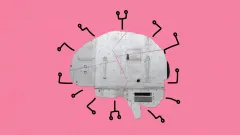Take a look inside 11 images
Lego Education Spike Prime
Pros: Fun, real-world engineering tasks with lesson plans; easy-to-use app; block-based programming.
Cons: A single starter kit is only enough for two students; text is minimal but there's no text-to-speech option.
Bottom Line: It's a well-designed product that provides layered learning and teacher supports.
Lego Education Spike Prime is an excellent addition of STEAM learning to any middle school classroom, afterschool program, or club. Teachers can access concisely written unit plans for Spike Prime on Lego's website. The lessons don't just give instructions to students; they set up a real-world engineering problem for students to solve. Each lesson plan includes tips for assessment, discussion, and differentiation. Though just using the kit and app would offer learning, the most powerful experience for students happens when the teacher asks questions, has discussions, and fosters thinking. The main themes of the units are the engineering design process, programming with variables and data, developing computation thinking skills, and applying the engineering design process through a robotic challenge.
For example, teachers can guide their students through starter projects such as creating a simple robot, called a Hopper, which drags itself along using its legs. Another unit involves a scenario where students have started their own business and need to build robots that perform functions like checking the quality of their product or carting product. Because the projects cover a wide range of skills, they're ideal for a multidisciplinary approach or even a co-teaching environment. And it's easy to focus beyond the building and talk about group dynamics, iteration, and executive functioning if you want students to practice metacognition.
Lego Education Spike Prime is a set of building materials designed for grades six through eight. The starter kit includes a hub, motors, distance, color, and force sensors. The hub can display simple graphics and play audio. Of course, more typical Lego connectors, wheels, blocks, and figures are also a part of the kit. All components are durable and will survive a fall from a table. Once students have assembled their creation, they connect it to the companion app or software. Android, iOS, Windows, and Mac OS are all supported, though it's important to note that only Chromebooks that can run Android apps will work. Students can access the app in several languages.
After connecting via Bluetooth, students can choose among some starter projects and models, a unit they were assigned, or a new project. When students start a lesson, they're presented with short videos and brief written directions or questions. The app provides wordless step-by-step directions when it's time to build. Many students will be familiar with this style of instructions, since they're just like the booklets used in traditional Lego kits.
Once students have finished their construction, they create or adjust code that will control how their creation behaves. The coding style is based on Scratch, where students drag and drop different blocks to create a program. When students are ready to test their program, they hit a play button that sends the code to the hub via Bluetooth.
Lego Education Spike Prime provides excellent STEAM learning and enough support for teachers to make implementation seamless. If teachers take the opportunity to ask leading questions and to have discussions, students can work on a wide variety of skills, from problem-solving to collaboration. Students won't build and program just for the sake of it, but to solve real-world problems. So, not only is the experience relevant and challenging, but it's also carefully designed to get students thinking about using science outside of the classroom while they work together and have fun innovating with the familiar building blocks of childhood.
The experience is efficient, as everything students need -- the directions, videos, and instructions -- is within the app. Connecting the hub to a device is quick, as is sending the code. This simplicity means that students will spend the majority of their class time engaged in learning and having fun while doing it. It's a thoroughly thought-through product that takes into account gender-neutral colors, missing pieces, and self-assessment opportunities in the lesson plans. But students will mostly love the innovation, teamwork, fun, and satisfaction that comes with working toward a goal. Don't be surprised if students ask to use the kit outside of class!





















